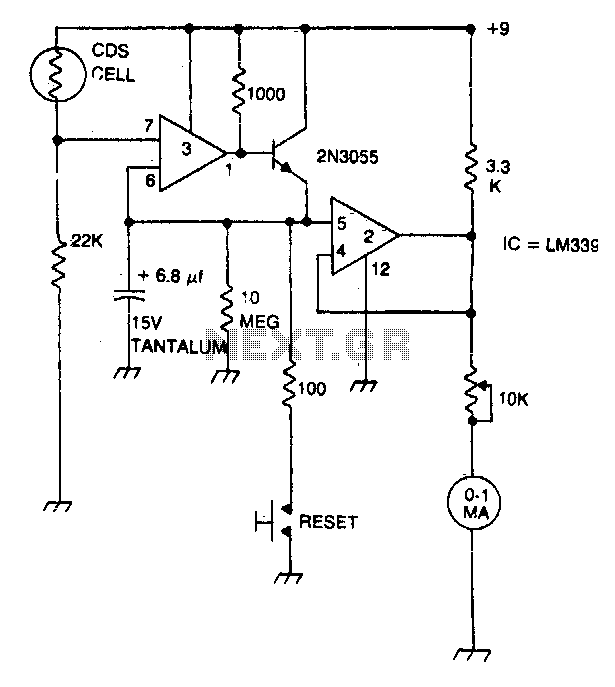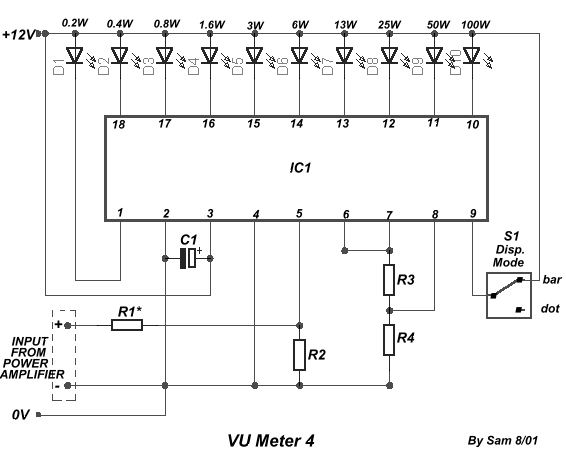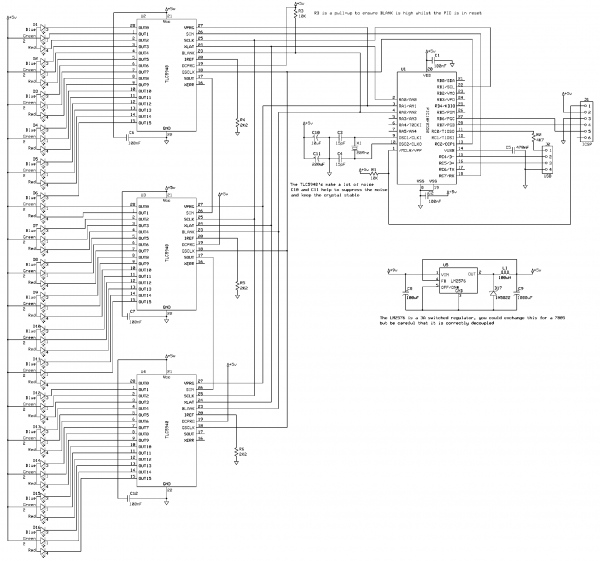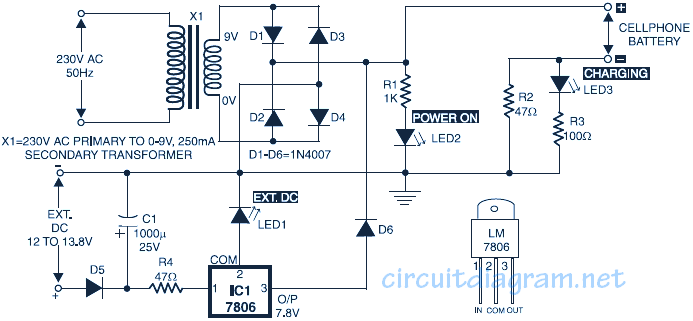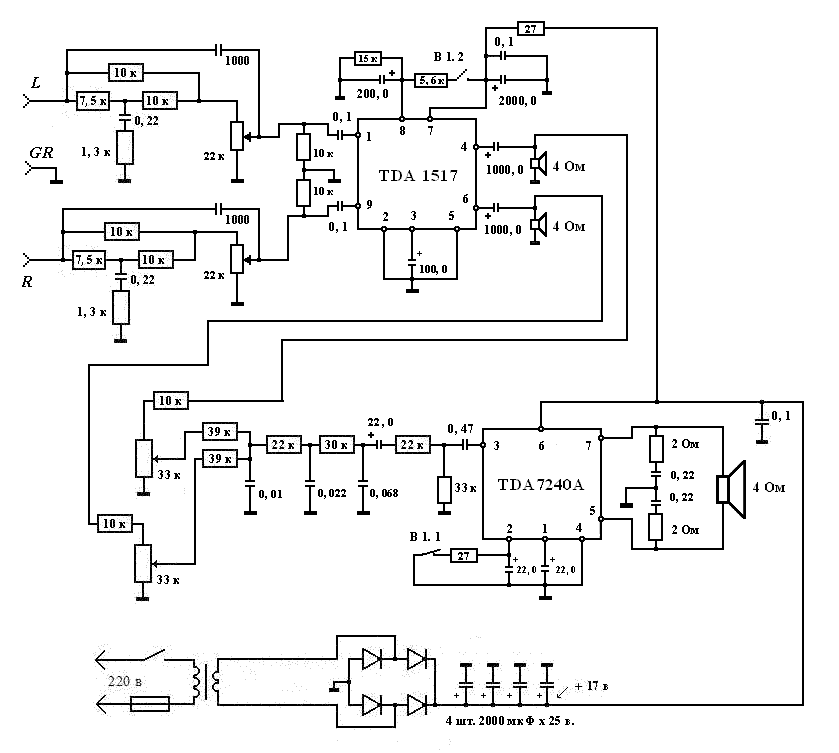
Simple vu meter schematic
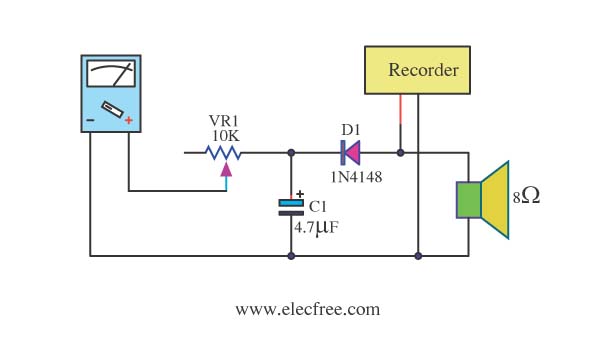
Expensive stereo systems generally feature VU meters that help indicate maximum power levels to prevent overloading. However, typical radio tape players do not include VU meters. A potential solution involves using a multimeter as a replacement. This can be achieved by utilizing a 100µA range and incorporating additional electronic components. A 10kΩ potentiometer is included to finely adjust the response of the meter. Diodes and capacitors are arranged to rectify alternating current (AC) to direct current (DC). The design allows for easy integration into an internal monitor speaker once the power amplifier circuit is completed. Many may consider circuits for peak reading VU meters. This circuit, which utilizes the CA310 integrated circuit, offers high sensitivity and displays readings on a current meter. Additionally, this circuit requires minimal components and is straightforward to assemble. The VR1 potentiometer is used to finely tune the sensitivity. It can detect very low voltage audio signals. Further details regarding the other components can be referenced in the circuit model.
The described circuit presents a practical solution for integrating a VU meter into audio systems that lack this feature. The use of a multimeter provides a cost-effective alternative to traditional VU meters, particularly in radio tape players where space and functionality may be limited. The incorporation of a 100µA range allows for accurate readings of low current levels, which is essential for monitoring audio signals without distortion.
The inclusion of a 10kΩ potentiometer enables fine-tuning of the meter's response, ensuring that the circuit can adapt to various audio signals. This adjustment is crucial for achieving optimal performance, particularly when dealing with fluctuating audio levels. The rectification process, performed by the diodes and capacitors, converts AC signals from the audio source into DC, making them suitable for measurement by the multimeter.
Once the power amplifier circuit is assembled, the integration of this VU meter circuit can be accomplished seamlessly, providing real-time monitoring of audio output levels. The CA310 IC is a key component that enhances the circuit's sensitivity, allowing it to detect subtle changes in audio signals. This feature is particularly beneficial for audio engineers and hobbyists who require precise monitoring capabilities.
The circuit's simplicity is a notable advantage, as it minimizes the need for extensive electronic knowledge or complex assembly processes. With only a few additional components required, the circuit can be constructed quickly, making it accessible for those looking to enhance their audio equipment without significant investment. The use of VR1 for sensitivity adjustment further adds to the user-friendly nature of the design, allowing for customization based on individual preferences or specific audio environments.
Overall, this circuit represents a valuable addition to audio systems, providing functionality that enhances the listening experience while maintaining ease of use and affordability.Expensive stereo is general often have VU meter come to and for help show max power the stereo not too much. For radio tape general plaything has will no VU Meter. I then think to seek Multi meter use can replace. By use Range 100uA and electronics equipment the other again. It have be Potentiometer 10KHZ for fine decorate the rapidity the value d eviates full scale. Part diode and Capacitors perform arrange the electric current rectifier from AC to DC Current. Usability easily by you build to straddle at internal monitor speaker immediately. When build power Amplifier Circuit finished already. Many you might something Peak Reading VU Meter circuits. I begs for to advise this circuit, be one your choice. By it uses IC CA310, make have high sensitive, show with Current Meter. Get comfortable besides this circuit still use the a little equipment and build easy as well. For VR1 use for fine decorate the sensitive of this. Give can signal sound temple, very low volt, get sir. Detail other part please see in like model the circuit is sir. Read More 🔗 External reference
The described circuit presents a practical solution for integrating a VU meter into audio systems that lack this feature. The use of a multimeter provides a cost-effective alternative to traditional VU meters, particularly in radio tape players where space and functionality may be limited. The incorporation of a 100µA range allows for accurate readings of low current levels, which is essential for monitoring audio signals without distortion.
The inclusion of a 10kΩ potentiometer enables fine-tuning of the meter's response, ensuring that the circuit can adapt to various audio signals. This adjustment is crucial for achieving optimal performance, particularly when dealing with fluctuating audio levels. The rectification process, performed by the diodes and capacitors, converts AC signals from the audio source into DC, making them suitable for measurement by the multimeter.
Once the power amplifier circuit is assembled, the integration of this VU meter circuit can be accomplished seamlessly, providing real-time monitoring of audio output levels. The CA310 IC is a key component that enhances the circuit's sensitivity, allowing it to detect subtle changes in audio signals. This feature is particularly beneficial for audio engineers and hobbyists who require precise monitoring capabilities.
The circuit's simplicity is a notable advantage, as it minimizes the need for extensive electronic knowledge or complex assembly processes. With only a few additional components required, the circuit can be constructed quickly, making it accessible for those looking to enhance their audio equipment without significant investment. The use of VR1 for sensitivity adjustment further adds to the user-friendly nature of the design, allowing for customization based on individual preferences or specific audio environments.
Overall, this circuit represents a valuable addition to audio systems, providing functionality that enhances the listening experience while maintaining ease of use and affordability.Expensive stereo is general often have VU meter come to and for help show max power the stereo not too much. For radio tape general plaything has will no VU Meter. I then think to seek Multi meter use can replace. By use Range 100uA and electronics equipment the other again. It have be Potentiometer 10KHZ for fine decorate the rapidity the value d eviates full scale. Part diode and Capacitors perform arrange the electric current rectifier from AC to DC Current. Usability easily by you build to straddle at internal monitor speaker immediately. When build power Amplifier Circuit finished already. Many you might something Peak Reading VU Meter circuits. I begs for to advise this circuit, be one your choice. By it uses IC CA310, make have high sensitive, show with Current Meter. Get comfortable besides this circuit still use the a little equipment and build easy as well. For VR1 use for fine decorate the sensitive of this. Give can signal sound temple, very low volt, get sir. Detail other part please see in like model the circuit is sir. Read More 🔗 External reference

